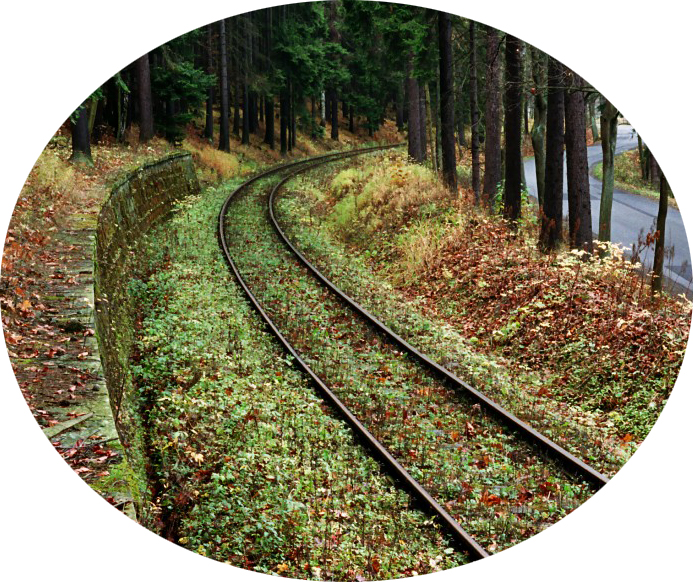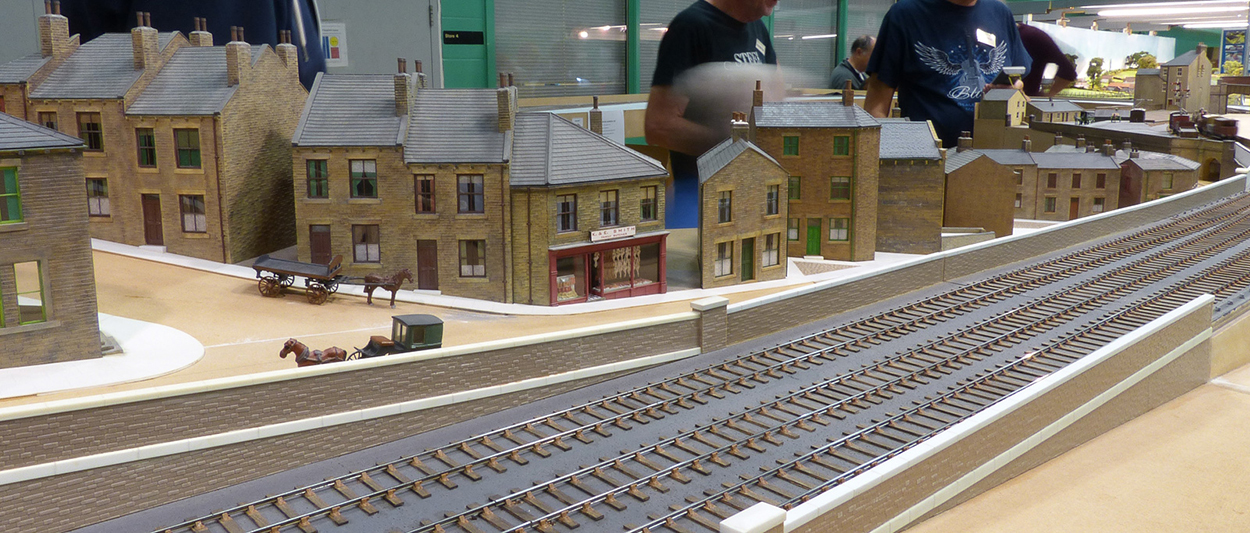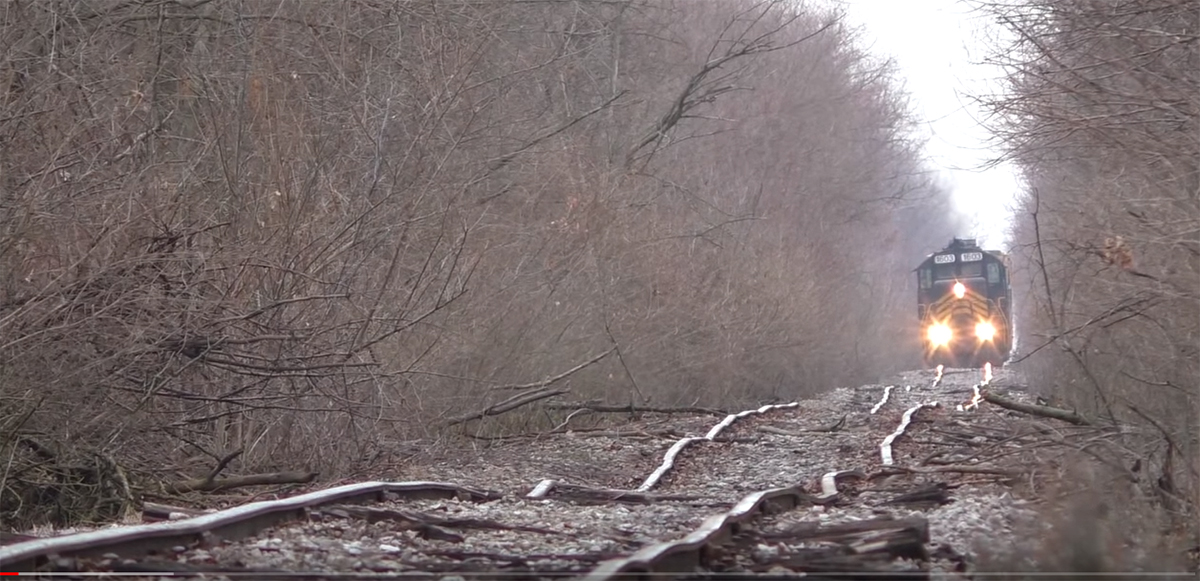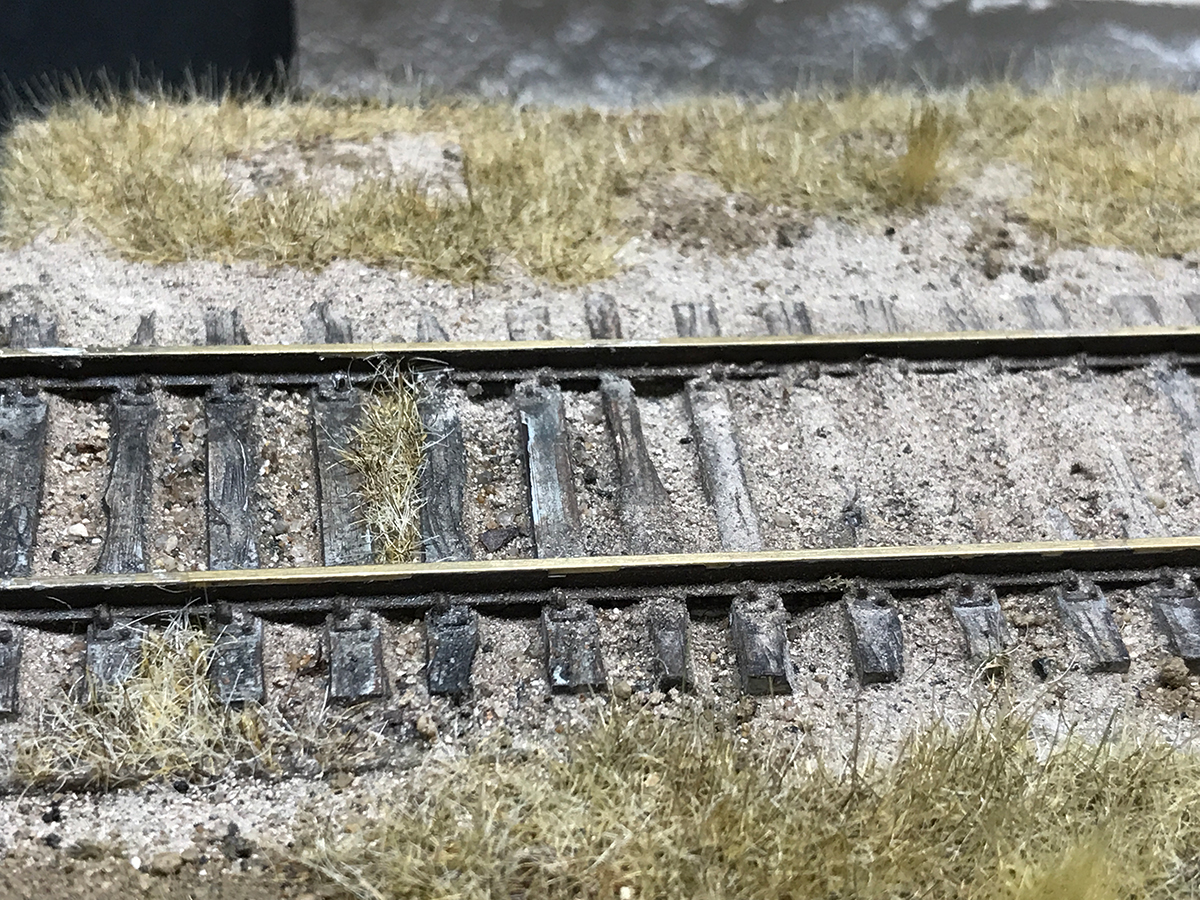I’m about to start working on The Town this upcoming week but before that I wanted to share some results of recent studies. Every now and then I try to get away from the layout to test out new ideas, to work with new materials and generally get experience in different areas of the hobby. As such I spent the last few weeks working in an area of the hobby that fascinates me the most: trackwork.
I’ve always been fascinated by trackwork – nicely eased passenger track, the complex arrangement of track around a station entrance, the spread of yard track, rickety old branch-line or short-line track; even abandoned track. I like the technical aspect of trackwork – how the components of a turnout fit together and how different weights of rail are used in different situations. But mostly I focus on the aesthetics of track and how the environment over the years affects its look and condition and how the look of the track affects the overall railway scene.

Like buildings the condition of a stretch of trackwork can represent a snapshot of various aspects of railroad history. It can represent the current financial condition of the railroad, it can reflect the importance of the industry being served to the railroad, it can represent weather history, and the behavior of the surrounding landscape over time.

When looking at small stretches of poorly maintained trackwork I’m always fascinated by the range of weathering and landscaping effects that can occur from tie to tie. A small five-tie stretch of track can look very different to the next five ties as some weathering or damage event may have occurred to the first set but not the second. Individual ties can vary – some may be splintered, some may be split, some may have moved around, some may be covered in oil, others in dust, others in soil. Some stretches of track get buried in soil, others in grass and sometimes ties and trackwork are embedded in a roadway or path.
As a modeler I’ve been very disappointed by the fact that so few modelers attempt to model these effects. My dissatisfaction began years ago with copies of the British Railway Modeler within whose pages I would find examples of exquisitely built structures and rolling stock alongside clunky, poorly ballasted commercial trackwork. This ‘ballerina in boots’ effect ruined the overall scene for me and placed the model firmly in the realm of toy train. Luckily I wasn’t the only dissatisfied modeler in the UK in that period and much work was done in various quarters of the hobby in the UK (mostly in the 1980s) to rectify the situation. Modelling organizations were either formed or took up the challenge and started producing prototypical parts for modelers to create their own much more realistic trackwork. Standards rose quickly and some beautiful models with fine-scale (and fine-looking) trackwork started appearing at last.

The trackwork that was produced certainly looked more prototypical from an engineering point of view, but from my point of view still looked very unsatisfactory when it came to representing the wear and tear and the effects of weathering and damage. Much of the track in the UK was created to cater for passenger rail (alongside freight). As a result maintenance standards were quite high giving trackwork a fairly uniform look across the country (yes there were many exceptions but by and large…). Across the pond US track has mainly been in service to freight and maintenance standards seem to be less stringent. As a result there are endless examples of interesting trackbeds – worn, grassed over, with rotten ties, having much character and varied and rich in interesting details. As well-modeled trackwork makes the difference between a good model and great model to not try to model it realistically seems like a crime against the hobby


So that’s what started me down this little four week project – the desire to model some of the character rich stretches of track that I’ve photographed or viewed in books.
I’m going to spend this week discussing this topic and showing how I approached modeling various effects. Here’s a quick view of a piece of track I produced. I’m going to discuss how I created this piece and three others.

